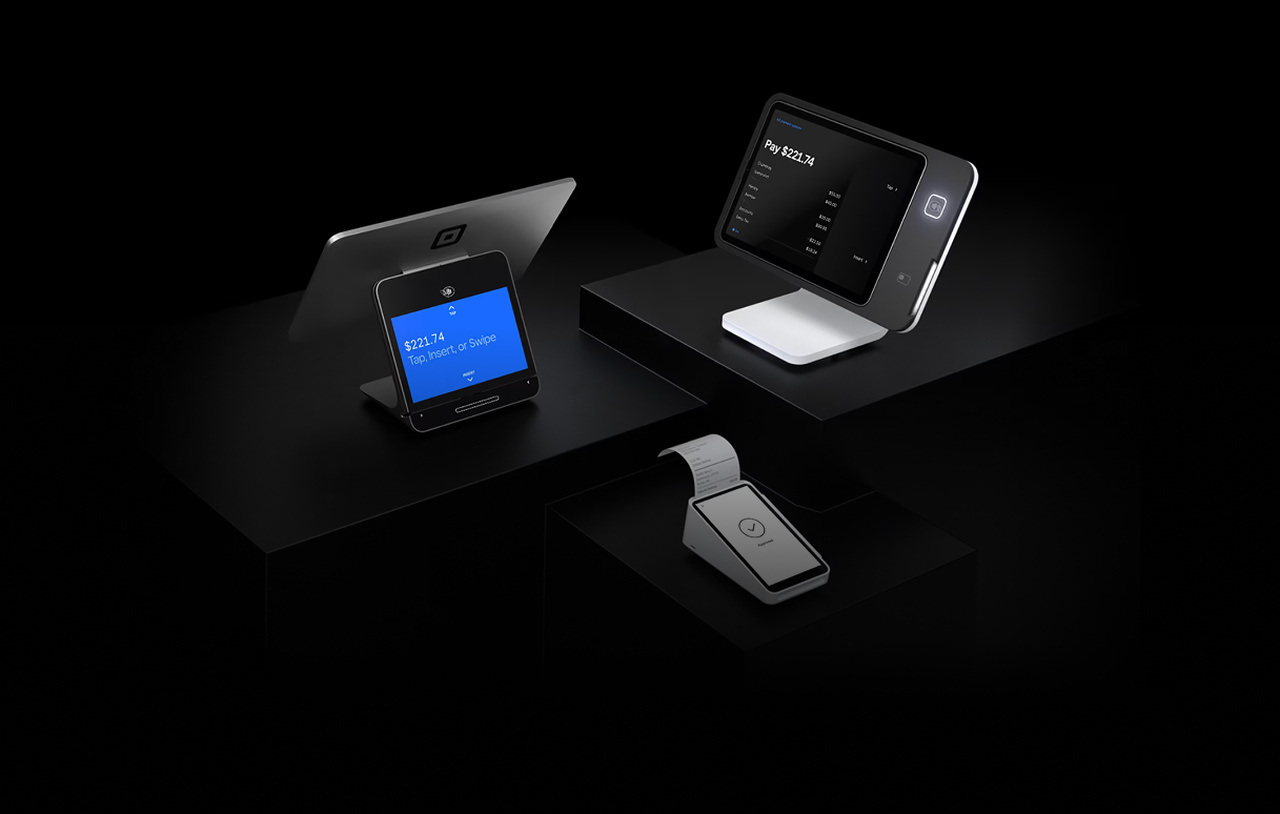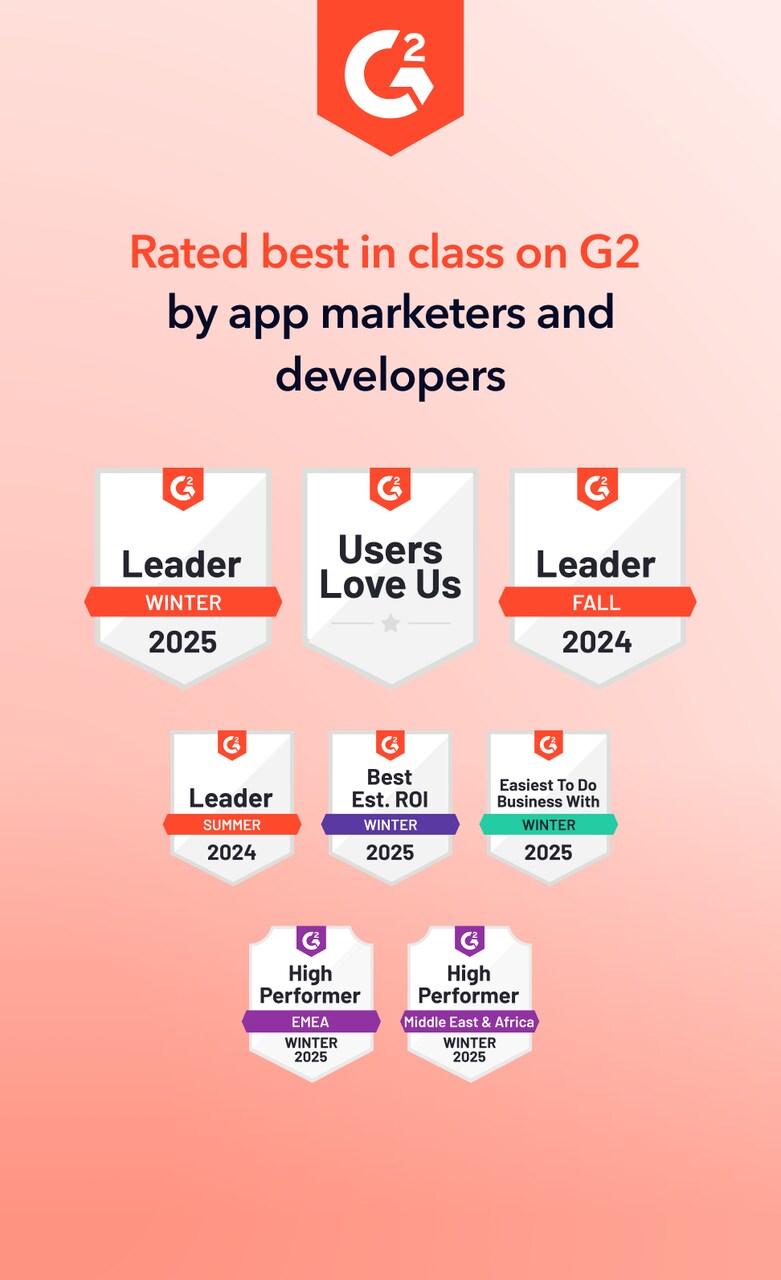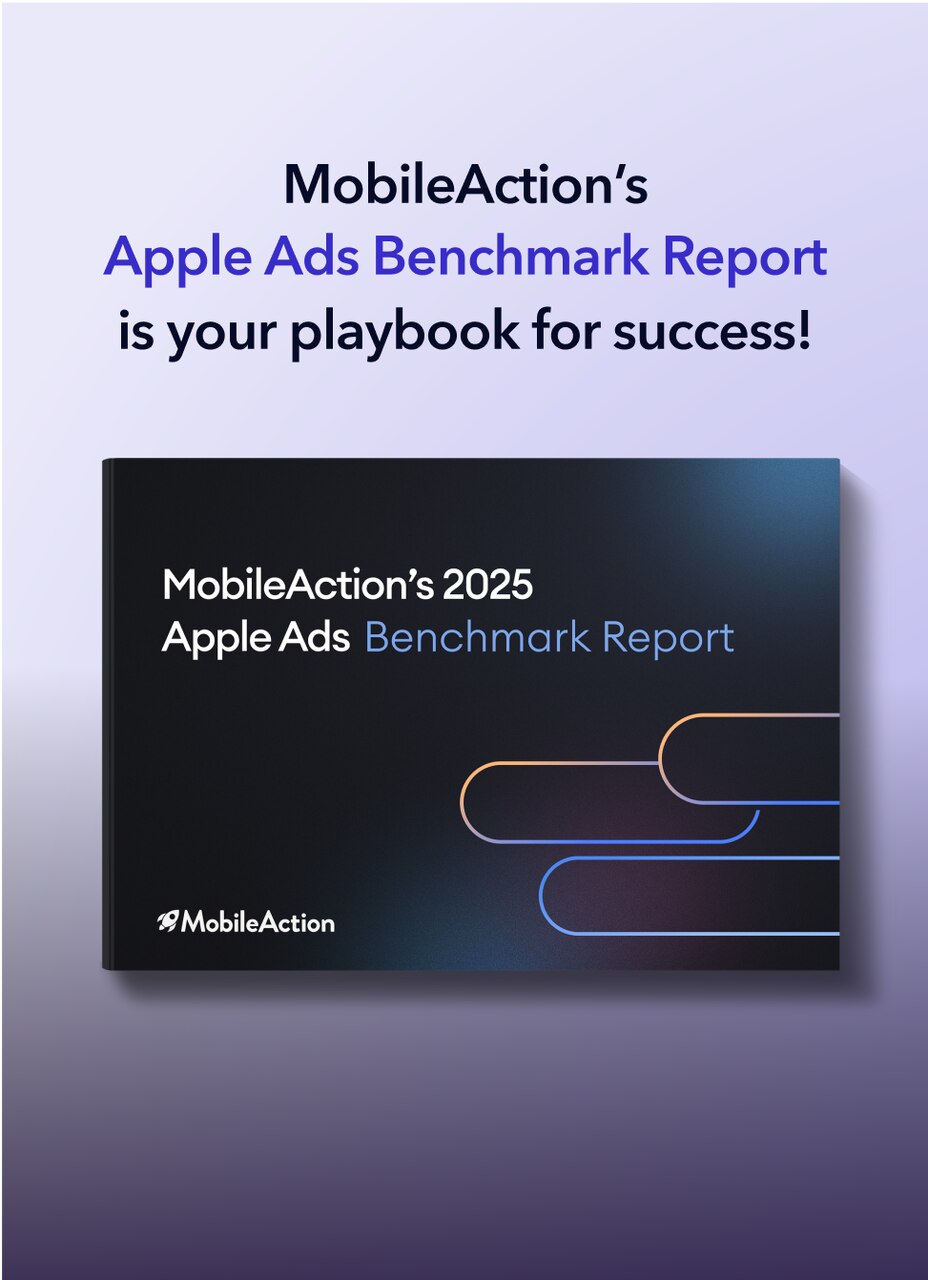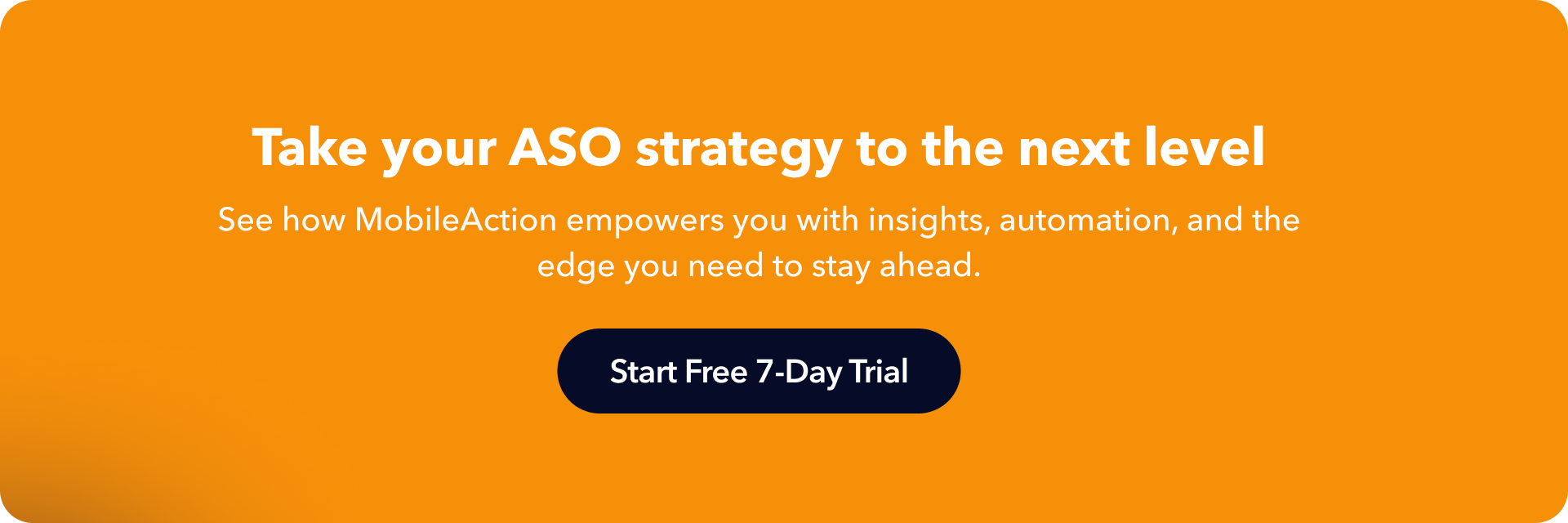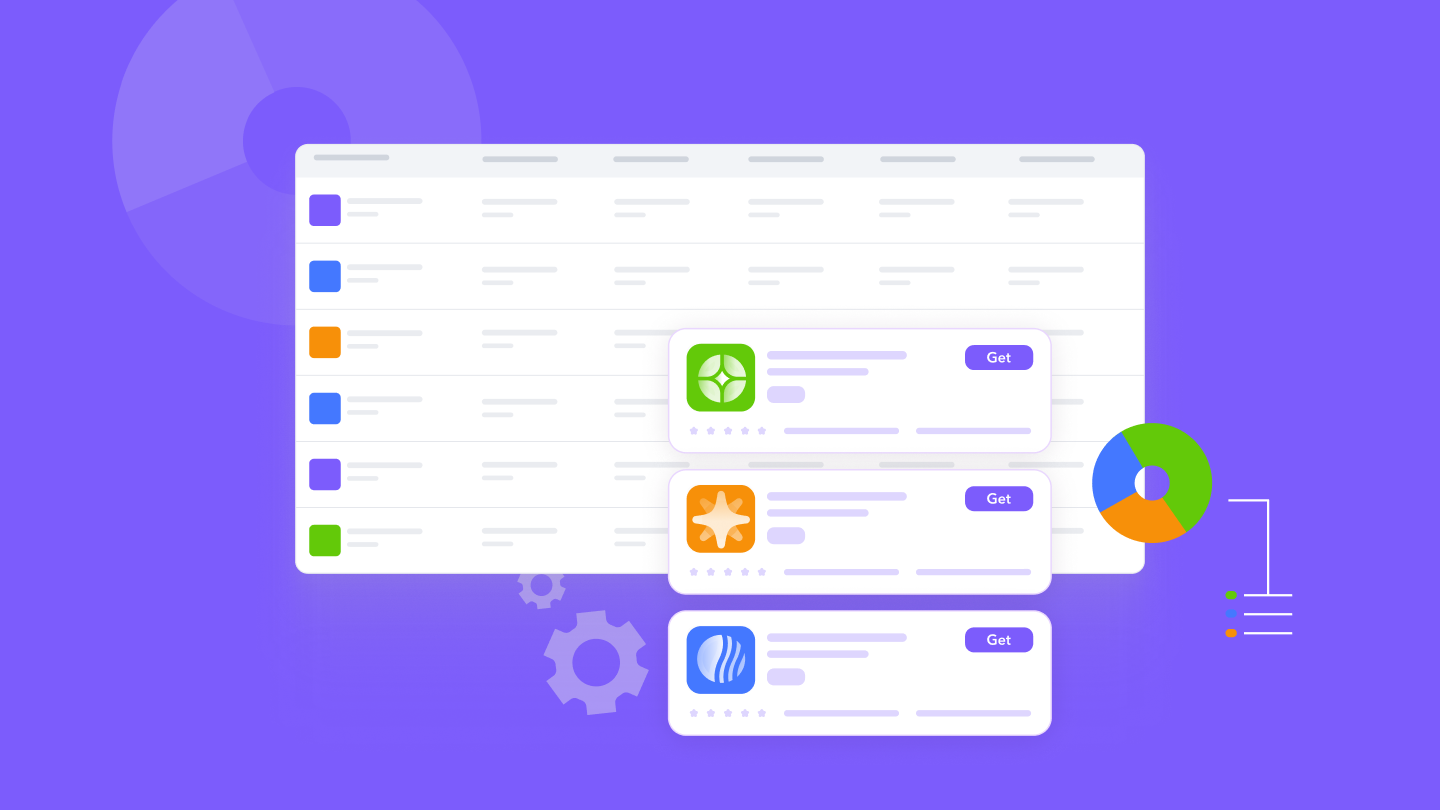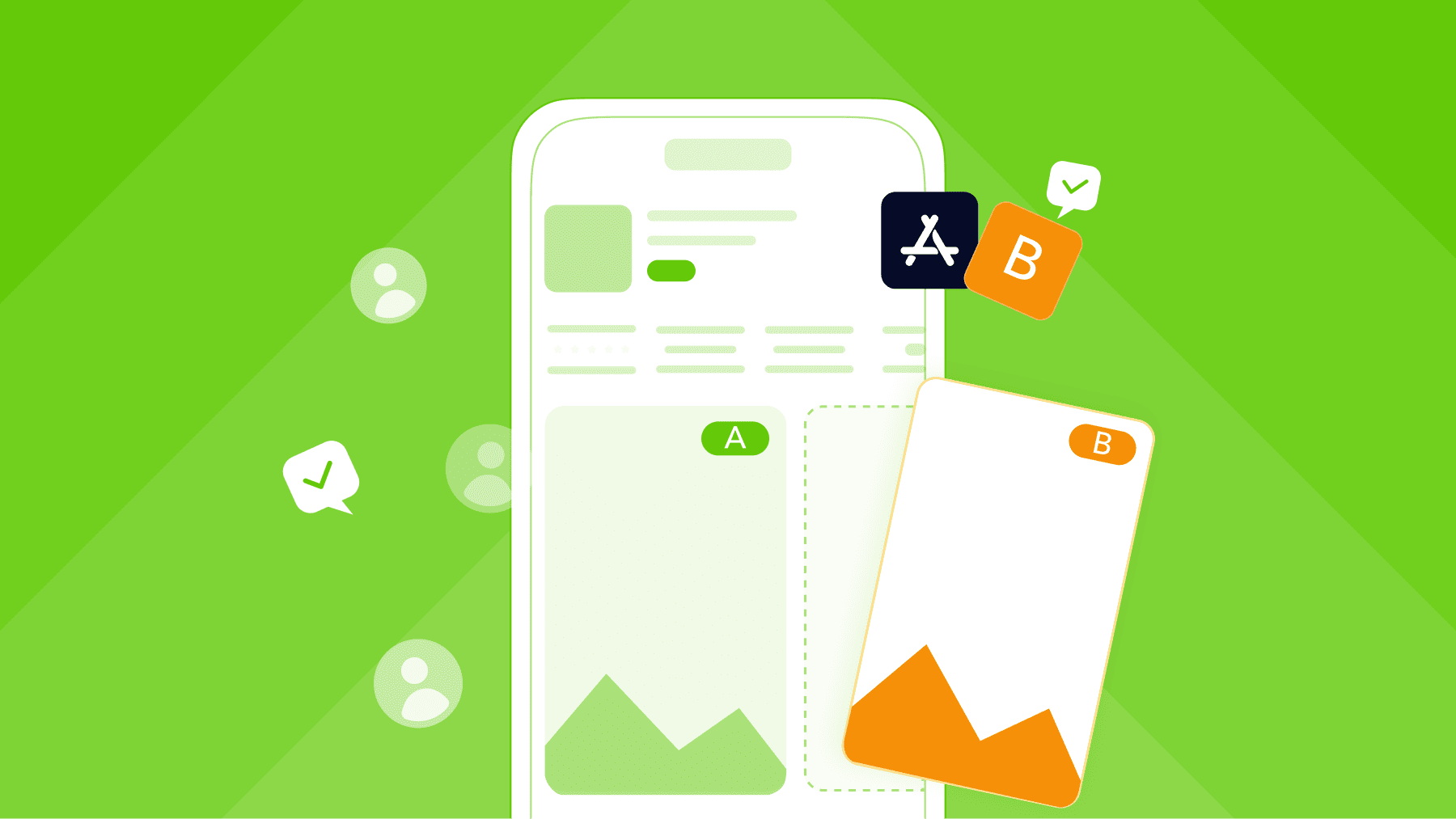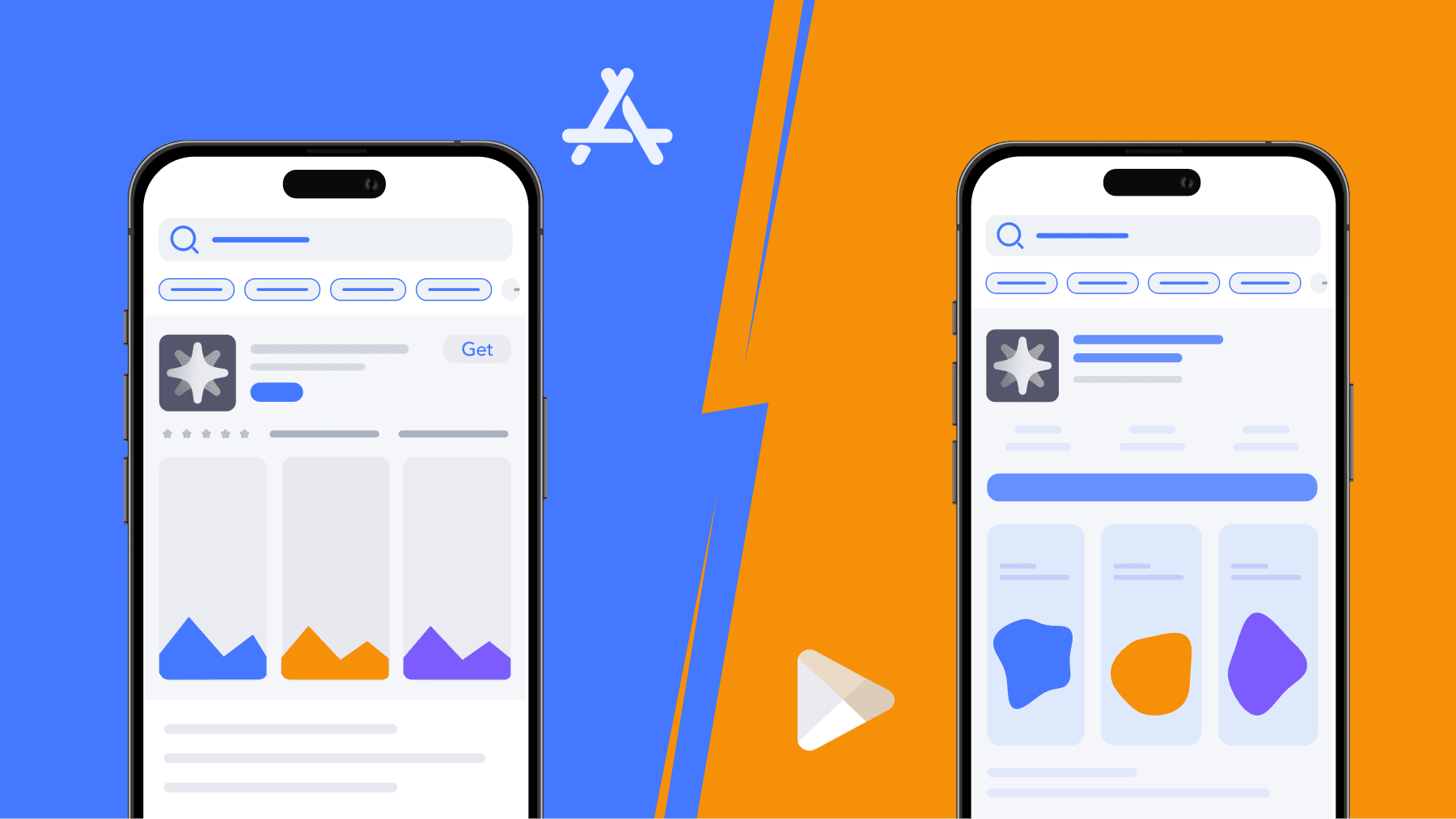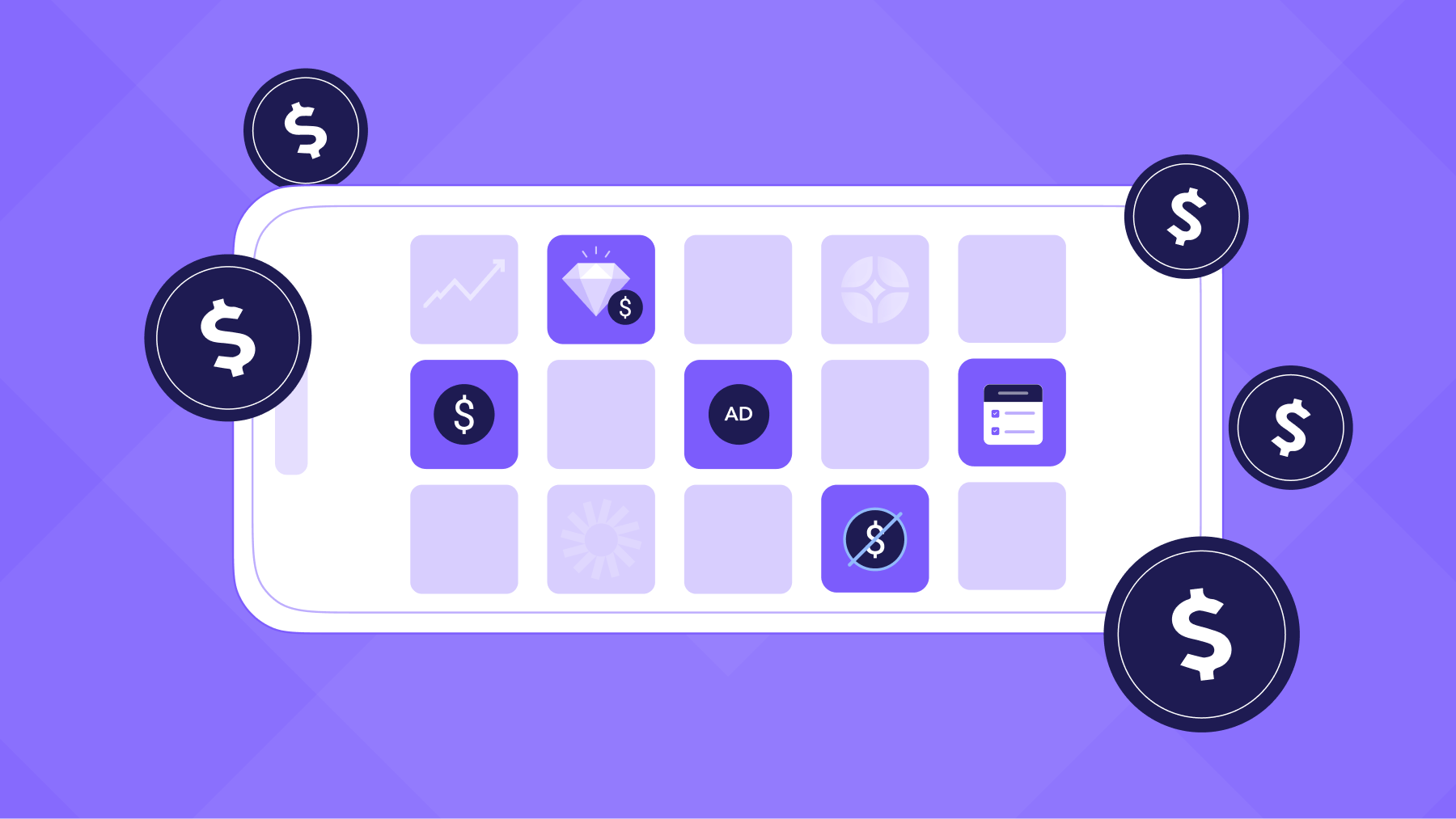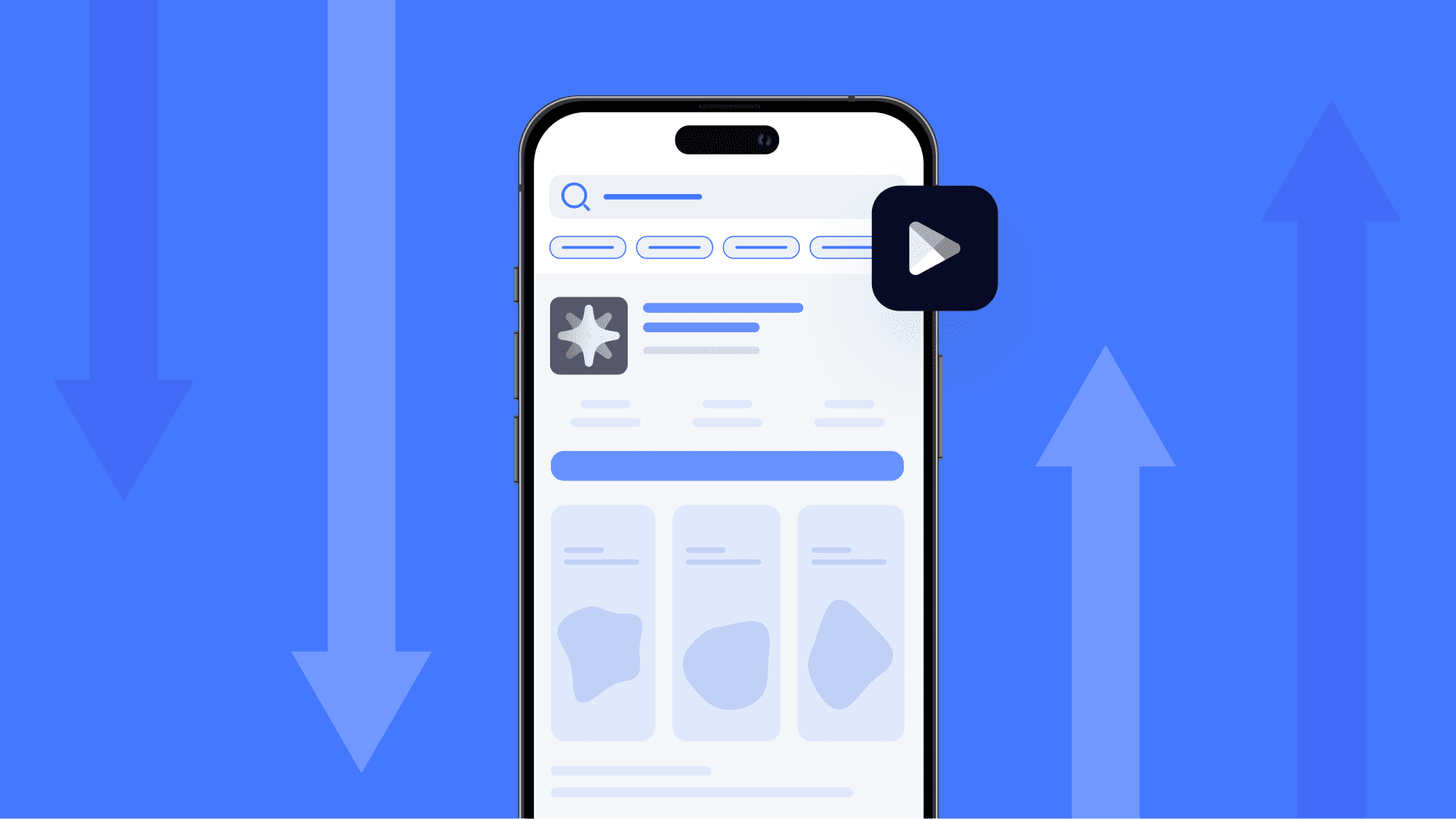Organic and inorganic marketing are the two primary ways mobile apps attract new users. Organic app marketing focuses on discoverability through unpaid channels such as App Store Optimization (ASO), keyword rankings, browse visibility, rating and reviews. Inorganic marketing focuses on paid user acquisition (UA) channels like Apple Ads, paid social, and display networks.
Understanding the difference between organic and inorganic marketing helps you evaluate how to structure your acquisition strategy, set realistic goals, and decide where to allocate resources. In most cases, app marketing teams use a mix of both. Organic channels build long-term visibility. Paid channels deliver predictable scale. In this blog post, we explain each approach clearly so you can choose the right channel for your app.
Key takeaways
- Organic app marketing is driven by improving app visibility through unpaid channels like App Store Optimization (ASO) and organic search traffic. It is cost-effective but it usually grows slowly and depends on factors you can’t control directly, like App Store search algorithms.
- Inorganic app marketing involves paid strategies like Apple Ads and social media advertising to acquire users quickly and effectively. It provides control over targeting and budgeting but requires a significant investment.
- The most effective approach for most app teams is to combine both organic and inorganic strategies in a hybrid marketing strategy, ensuring sustainable long-term growth and immediate visibility in a competitive market.
What is organic app marketing?
Organic app marketing refers to all unpaid methods used to increase your app’s visibility, search rankings, and conversions on the App Store and Google Play. Organic downloads occur when users discover your app naturally, through search, browsing a category, or engaging with your brand outside of paid ads.
Key organic app marketing channels
1. App Store Optimization (ASO)
App Store Optimization (ASO) is the core of organic app marketing. It determines how easily users can find your app in App Store and Google Play search, and how likely they are to install once they reach your product page.
ASO has three main pillars;
#1 Keyword optimization
You decide which search terms you want to rank for by placing the right keywords in your app title, subtitle/short description, long description (Google Play), and the App Store keyword field. The goal is to appear for a balanced mix of high-intent, brand, and category keywords.
MobileAction’s Keyword Inspector, Competitor Keywords, and Metadata Optimizer help you evaluate search volume, competition, and opportunities before updating your metadata.

#2 Creative optimization
Your icon, screenshots, and preview video determine if users install or drop off. Strong creatives highlight your core value in the first screenshot, use real UI, and adapt to different audiences and markets.
MobileAction’s Creative Monitoring helps you benchmark top competitors and understand how leading apps position themselves visually.
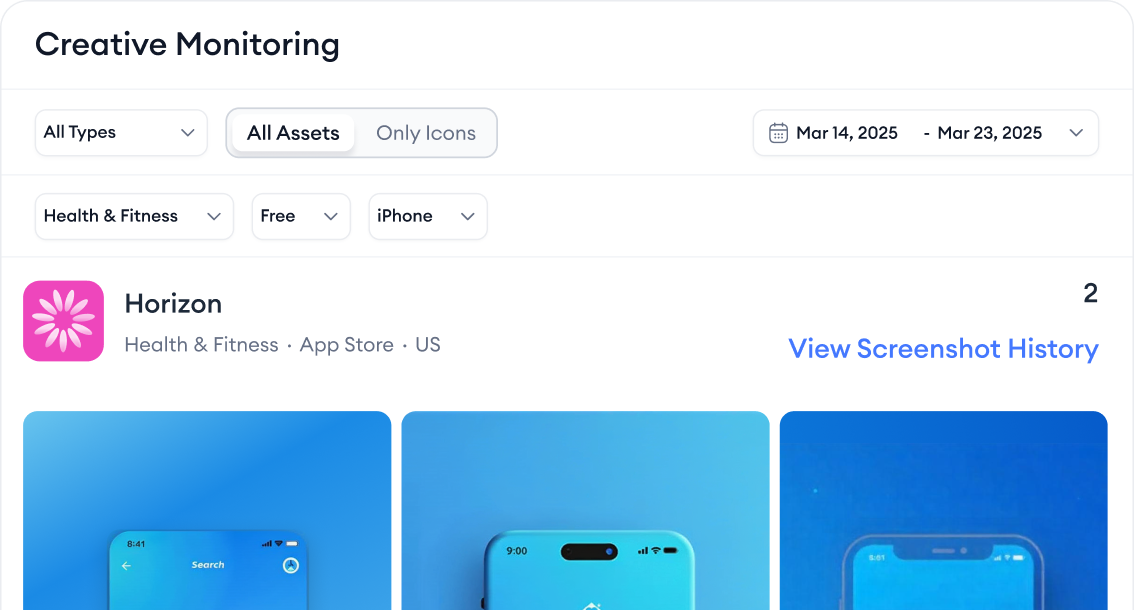
#3 Localization and market-specific optimization
Organic growth depends heavily on speaking the user’s language and adapting to local expectations. For every target country, you should localize your titles, descriptions, and keywords, adjust screenshots and messaging to fit cultural context, and consider local pricing or regulatory differences.
MobileAction’s Localization and Keyword Translator tools help you find country-relevant keywords and adapt your store listing beyond literal translation.
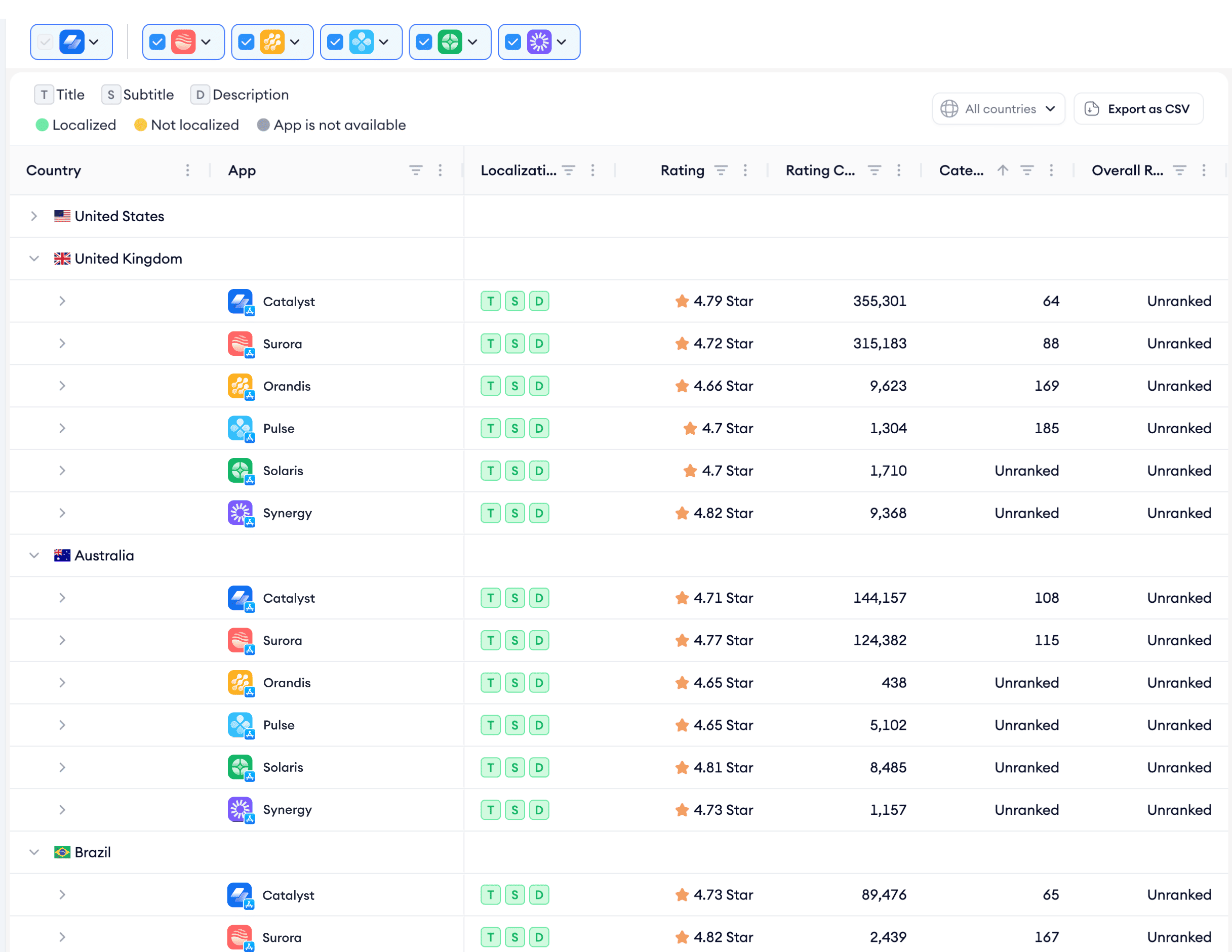
2. App ratings, reviews, and in-app experience
Even the best ASO strategy will struggle if your app has low ratings or unresolved issues in reviews. Ratings and reviews are a core organic marketing channel because they directly affect; conversion rates from store page views to installs, ranking potential in search and top charts and user trust when comparing you with similar apps.
With MobileAction’s Reviews & Ratings, you can track rating trends, review volume, and common keywords in user feedback. And with MobileAction’s AI Review Reply, you can generate fast, consistent, and on-brand responses for each review, helping you improve sentiment while saving time.

3. Store rankings, browse traffic, and editorial placements
Another important source of organic app traffic is how your app appears in:
- Top charts and category rankings
- “Featured” or editorial collections
- “Similar apps” and recommendation modules
These surfaces drive browse traffic, users who were not searching for you specifically but discover you while exploring the store.
To strengthen this channel, you should maintain steady download and engagement trends, reduce uninstalls by improving app onboarding and first-session experience, monitor ranking movements across countries and categories, and time major updates with seasonal demand.
4. Web & content presence feeding the app stores
Not all organic installs start in the app stores. Many users discover apps via:
- Blog posts, SEO landing pages, and help center content
- Comparison articles (“best budget apps,” “top meditation apps”)
- Product documentation and how-to guides
- PR, guest posts, or podcasts
These pages often link directly to your App Store or Google Play listing, generating unpaid external traffic that is still considered organic.
Create SEO-optimized landing pages for key use cases, link them to your custom store listings and custom product pages and track how much traffic and how many store visits each page drives.
5. Social, community, and influencer-driven organic traffic
Organic efforts on social platforms and communities also contribute to app installs, especially for consumer apps and games:
- Social media (Instagram, TikTok, X, YouTube)
- Communities (Reddit, Discord, Facebook groups)
- Influencers who mention or review your app without a paid placement, or with very light collaboration
Though this traffic is harder to attribute precisely, you can use trackable links (UTMs) in bio and content, monitor spikes in store page visits and installs after content goes live, and encourage user-generated content by showcasing real app workflows or results.
6. Custom product pages for organic audiences
On iOS, custom product pages are often viewed as a paid tool because they are heavily used together with Apple Ads. However, they can also support organic app marketing:
- You can create custom product pages tailored to specific keyword themes, audiences, or campaigns.
- These pages can be surfaced in search results or linked from external organic campaigns.
- You can test different messaging or visuals for specific intents (e.g., “habit tracking” vs “goal setting”).
With CPP Intelligence and Organic CPP Results, you can see how specific custom product pages perform by keyword, category, or country, across both organic and inorganic traffic. This helps you refine messaging for each segment while staying within your broader organic and inorganic marketing strategy.
Pros of organic app marketing
Organic marketing plays a long-term role in sustainable mobile growth. Its biggest advantage is that it compounds over time, as your visibility strengthens, each improvement supports the next. Below are the core benefits teams typically see when investing in organic acquisition.
1. It lowers your long-term costs
Organic installs are free. You may spend time improving your metadata and store creatives, but once they’re optimized, every new user costs you almost nothing. This saves money in the long run, especially when paid ads get expensive.
2. Your visibility grows steadily
Good rankings usually stay stable. When your keywords and conversion rates are strong, you keep getting traffic month after month. With regular updates, this growth becomes consistent and predictable.
3. You attract better-quality users
People who find your app on their own (through search or browse) usually have higher intent. They tend to stay longer, use the app more, and convert better because they were already looking for what you offer.
4. It builds trust in your brand
Ranking well and having strong reviews make your app look reliable. Users trust apps they see at the top of search results, which helps you convert more store visitors into installs.
5. It improves your paid campaigns
When your store page is already optimized, your paid ads perform better. Higher conversion rates and relevant metadata help you lower CPIs and get more value from your budget.
6. It keeps your installs steady when budgets drop
If you reduce ad spend or pause campaigns, organic visibility keeps your installs from falling sharply. It gives you a stable baseline during slow seasons or budget shifts.
7. It gives you a long-term competitive edge
Strong organic rankings and positive user sentiment are not easy for competitors to copy quickly. This makes your app harder to outrank and helps you stay ahead over time.
Cons of organic app marketing
While organic growth offers long-term value, it also comes with limitations that can affect your ability to scale quickly or respond to fast-moving competition. Understanding these constraints helps you decide how much organic vs inorganic marketing your app needs.
1. Results take time
Organic growth is slow. Rankings and browse visibility improve over weeks or months, not days. If you need fast user acquisition for a launch or seasonal push, organic alone won’t be enough.
2. Some categories are extremely competitive
In crowded spaces like fitness, finance, or photo editing, it’s hard to rank for big keywords right away. You often need to target long-tail keywords first and build up visibility gradually.
3. Algorithms change often
App Store and Google Play update their ranking systems regularly. When that happens, your keyword positions or browse visibility can shift suddenly. You need ongoing monitoring, not a one-time ASO update.
4. You must keep updating metadata and creatives
User behavior changes, competitors update their pages, and seasonal trends shift. This means your keywords, screenshots, and videos need regular refreshes to keep conversion rates high.
5. Hard to scale predictably
Unlike paid UA, you can’t control how many installs you get from organic channels. Even with strong rankings, traffic can fluctuate, which makes forecasting harder.
6. Sensitive to ratings and reviews
A bad update or a wave of negative reviews can immediately hurt your visibility and conversion. Organic performance depends heavily on maintaining strong sentiment.
7. Limited for niche or brand-new concepts
If users aren’t already searching for what your app does, organic channels won’t bring much traffic. New categories often need paid support first to build awareness.
What is inorganic app marketing?
Inorganic app marketing includes all the paid methods you use to acquire users through advertising. Instead of relying on search rankings or word-of-mouth, you pay for impressions, clicks, or installs to reach the audiences you want and scale quickly. The goal is to drive predictable, controllable growth using budgets, targeting, and optimization.
Most teams use channels like Apple Ads, Google Ads, Meta Ads, TikTok Ads, and programmatic networks such as AppLovin, Unity, ironSource, and Google AdMob. These platforms let you choose who to reach, how much to spend, and how fast to grow.
A typical process is simple: set your goal (installs, ROAS, etc.), define your audience, prepare creatives and keywords, and launch. After that, you optimize bids, test new creatives, and adjust budgets. Paid keyword strategies, especially on Apple Ads and Google Play, help capture high-intent searches right when users are ready to install.
Key inorganic app marketing channels
Below are the primary inorganic channels used in mobile marketing.
1. Apple Ads
Apple Ads is one of the most effective paid channels because it reaches users right when they’re searching in the App Store. These users already know what they want, so they usually convert at a higher rate. You typically bid on keywords, test different ad variations, and connect the right custom product pages to each keyword group to improve performance.
With SearchAds.com by MobileAction, you can make this process much easier. Tools like Smart Bidding, Automations 2.0, Co-pilot, and Keyword Auction Insights help you adjust bids automatically, understand keyword competition, and manage budgets without manual work.
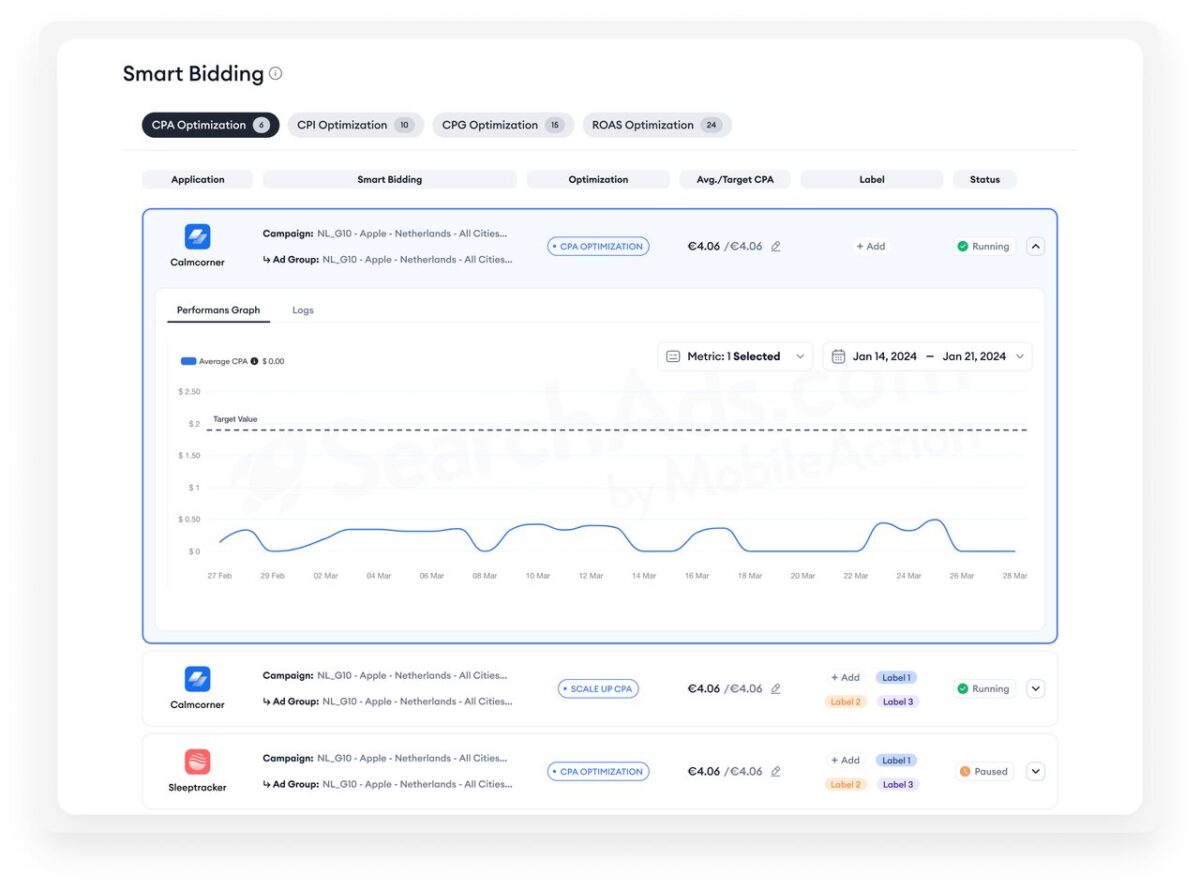
2. Google App Campaigns
Google App Campaigns show your ads across Google Search, YouTube, Google Play, and the Display Network. You upload your creatives, or let Google generate them, and the system automatically optimizes toward your goal, like installs or in-app events. Because these campaigns run across Google’s entire ecosystem, they help you reach a wide and diverse audience, making them great for scaling quickly.
3. Paid social advertising
Platforms like Meta (Facebook and Instagram), TikTok, and Snapchat let you target users based on their interests, behaviors, and demographics. These channels work especially well for creative-driven user acquisition because results depend heavily on the videos you use, current trends, and how well your message matches each audience. Most teams constantly test new creatives to find the versions that deliver the lowest cost per install.
If you want a quick way to browse competitors’ paid creatives across TikTok, Meta, and other networks without running a full analysis, the Ad Library offers a free, simple way to explore creative formats, impression share, and market distribution.
4. Programmatic ad networks
Ad networks like AppLovin, Unity, ironSource, Mintegral, and others help you scale beyond the big platforms. They use algorithmic targeting to show your ads to users who are most likely to install or engage. These programmatic channels are often used when teams need high volume and are ready to optimize across many different placements, games, and device types.
5. OEM and pre-install placements
Some companies partner with phone makers or carriers to have their apps pre-installed on new devices or shown in built-in recommendation sections. This gives your app instant visibility the moment someone turns on their phone. It’s especially helpful for apps with broad appeal, like utilities or finance apps, because it provides a steady flow of installs without extra effort.
6. Influencer and creator advertising (paid placements)
Paid influencer campaigns on platforms like TikTok or Instagram can drive inorganic installs through creator content. These campaigns are still classified as paid because you sponsor the placement, even if the traffic feels more organic. Teams typically measure results through trackable links or attribution partners.
7. Paid custom store listings and custom product pages
On iOS, you can use custom product pages and connect them to your Apple Ads campaigns. Each page can target a specific audience, keyword theme, or creative style, so users see a landing page that matches exactly what they searched for. Google Play offers something similar with custom store listings.
These pages help improve paid conversion because the message and visuals are tailored to the user’s intent.
With MobileAction’s CPP Intelligence, you can compare how each custom product page performs, its impressions, conversions, and downloads, so you can quickly see what works and improve both your paid and organic landing experiences.
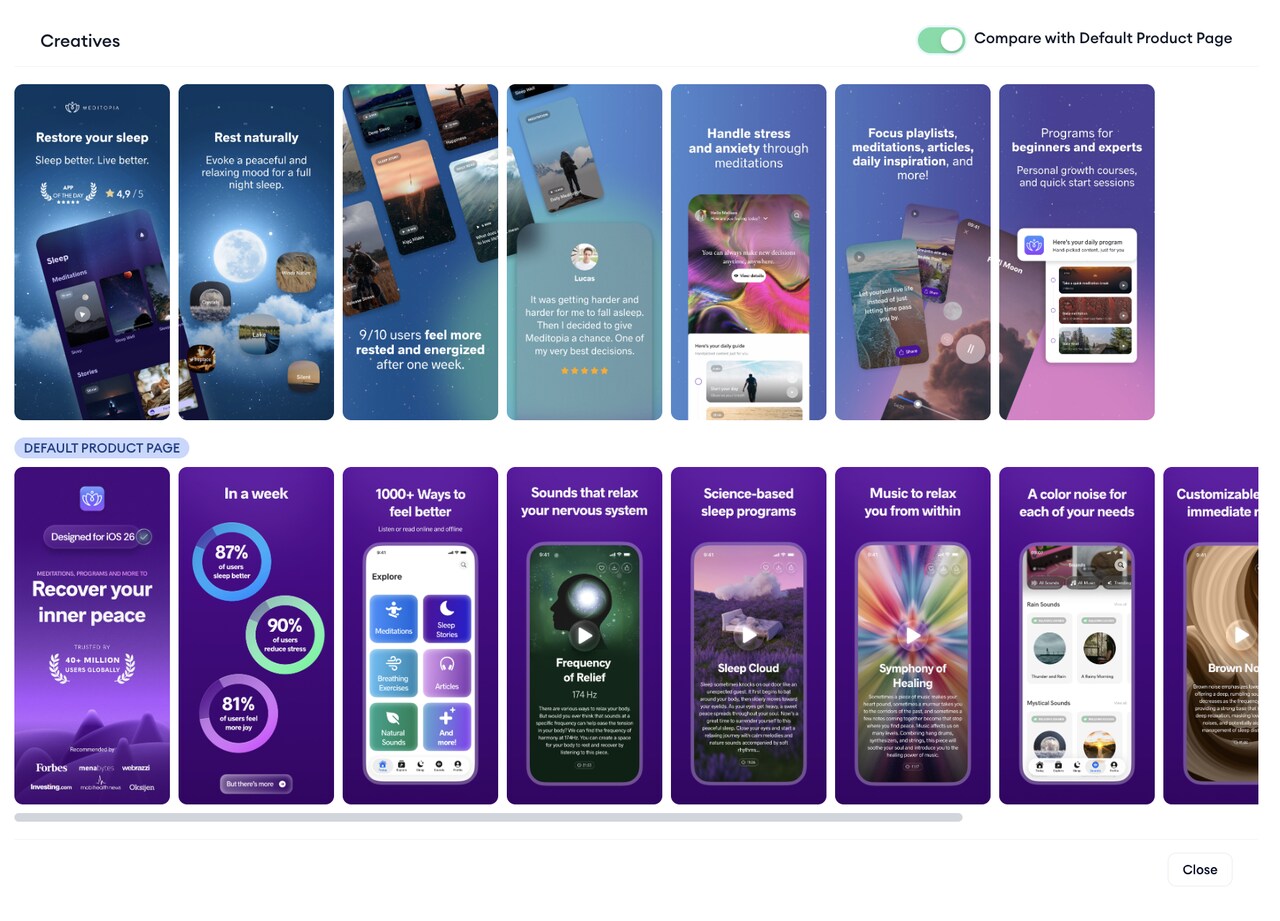
Pros of inorganic app marketing
Inorganic app marketing offers clear advantages for teams that need predictable growth, controlled targeting, and scalable user acquisition. Because paid channels deliver traffic on demand, you can adjust campaigns quickly based on performance, market conditions, or seasonal opportunities.
1. Fast and predictable results
Paid campaigns start delivering installs as soon as you launch them. This is ideal for new feature releases, seasonal peaks, or hitting specific growth targets. You control how fast you scale.
2. You can target the exact audience you want
Platforms like Meta, TikTok, Google, and Apple Ads let you target people based on interests, behaviors, demographics, or search intent. You can constantly refine your audience to reduce waste and improve efficiency.
MobileAction’s Ad Intelligence helps by showing which networks, countries, and audience groups your competitors focus on, so you can make smarter decisions.
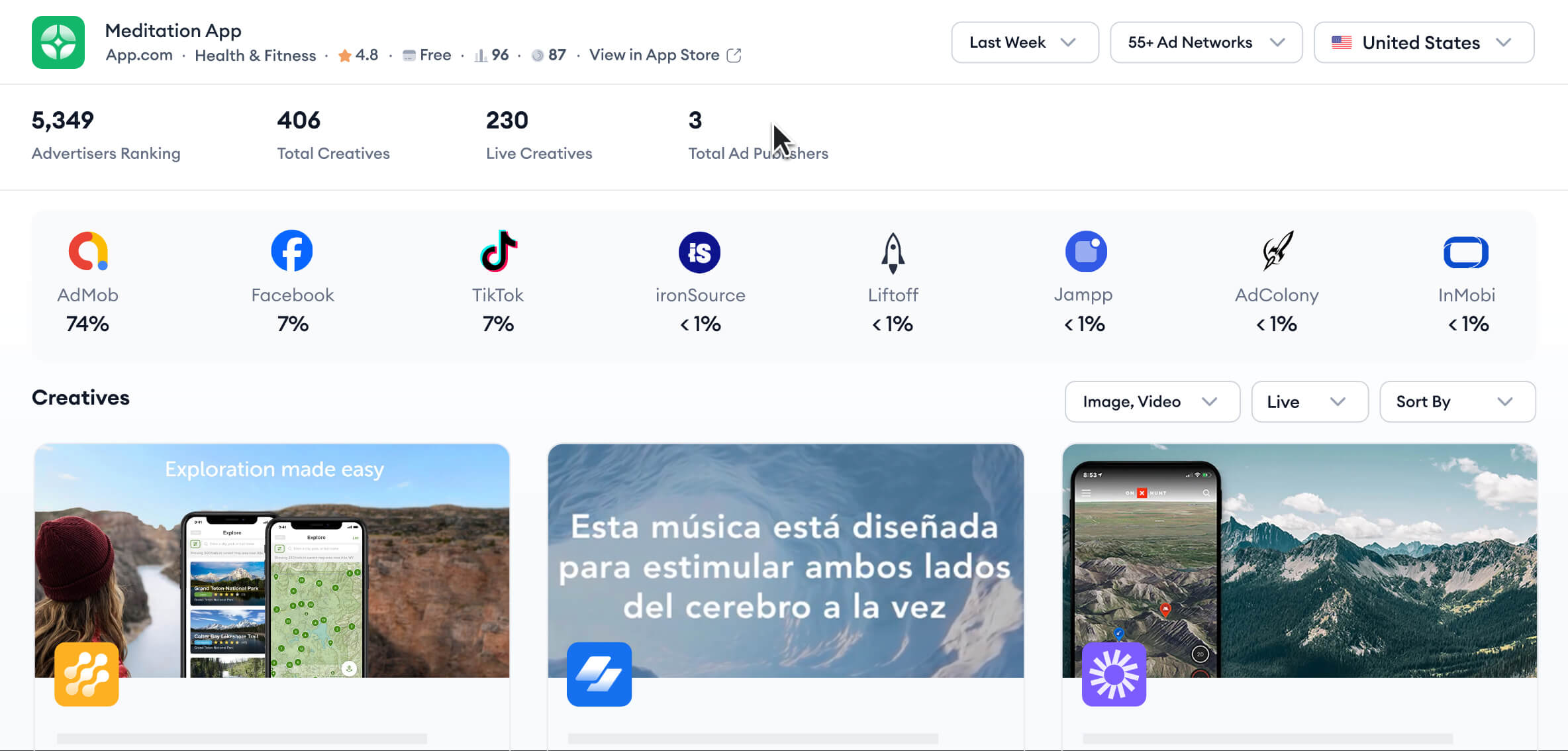
3. Easy to optimize with data
Paid campaigns give you clear performance data: impressions, clicks, installs, and in-app events. You can test creatives, adjust bids, and shift budgets quickly.
With SearchAds.com by MobileAction, you can automate this work and keep campaigns efficient.
4. High-intent users from paid search
Paid search on the App Store and Google Play reaches people who are actively looking for apps like yours. These users convert better, and paid search also protects your brand keywords from competitors.
5. Quick expansion into new markets
Paid channels let you test new countries instantly. You control the budget, creatives, and pacing. If a market performs well, you scale; if not, you shift spend elsewhere.
Market Intelligence helps you evaluate which regions have real demand before you invest.
6. Great for testing and validation
Paid traffic helps you quickly test messaging, features, and creatives. You don’t have to wait for organic traffic to build.
7. Speeds up your overall growth
Paid campaigns boost visibility, support organic performance, and help you maintain stable install volume. When combined with strong ASO, they create a balanced and scalable growth strategy.
Cons of inorganic app marketing
While inorganic app marketing gives you control over scale and targeting, it also introduces challenges that require careful management. Paid channels can be powerful, but they come with financial, operational, and strategic drawbacks that teams need to consider before relying on them heavily.
1. Costs can rise quickly
Paid acquisition gets more expensive over time as competition increases. Bids go up, creatives lose performance, and you must keep optimizing to avoid high CPIs and CPAs. Even with tools like SearchAds.com helping you stay efficient, costs still trend upward in competitive markets.
2. You’re dependent on budget
The moment you pause your campaigns, installs drop. Paid traffic doesn’t build lasting visibility the way organic does, so you need a continuous budget to keep results stable.
3. Creative fatigue is constant
On platforms like Meta and TikTok, creatives burn out fast. You need to test new videos and variations all the time, which takes time and resources. Ad Intelligence can guide you, but ongoing creative production is unavoidable.
4. Attribution can be messy
Different networks may claim the same install, and privacy changes make tracking harder. Without solid measurement, it’s tough to know what’s truly working.
5. Risk of wasted spend or low-quality traffic
Programmatic networks sometimes deliver users who don’t engage, or worse, invalid or fraudulent installs. This leads to budget waste and weaker performance.
6. Not sustainable on its own
Paid growth is great for scaling, but it doesn’t replace a strong organic foundation. If your app depends only on paid traffic, costs may outgrow your revenue over time.
7. Requires skilled teams and the right tools
Running paid campaigns at scale takes expertise in bidding, creative strategy, analytics, and attribution. Without the right people and platforms, it’s hard to maintain strong performance.
Organic vs. inorganic app marketing: What’s the real difference?
Organic and inorganic marketing both aim to bring users to your app, but they work in very different ways. Knowing the difference helps you plan your budget, set the right expectations, and build a balanced growth strategy.
Organic app marketing grows your visibility naturally. You improve your search rankings, product page, ratings, reviews, and overall reputation. You don’t pay for each impression or install. It takes time, but once your visibility is strong, it keeps working even if you reduce your budget.
Inorganic app marketing brings installs through paid campaigns. You decide who to reach, how much to spend, and how fast you want to scale. Results start immediately, but they stop the moment you turn off your ads. Long-term success depends on how efficiently you can acquire and monetize those users.
Comparison Table (Side-by-Side)
| Aspect | Organic Marketing | Inorganic Marketing |
| How it works | Users find your app naturally (search, browse, brand). | You pay for impressions, clicks, or installs. |
| Cost | No direct CPI; investment in ASO and product quality. | Direct cost per install; requires ongoing budget. |
| Speed | Slow to build, stable over time. | Immediate results, stops when spend stops. |
| Control | Limited control over rankings and visibility. | Full control over targeting, bids, and scale. |
| Scalability | Grows gradually with optimization. | Scales quickly with budget. |
| Traffic quality | Typically higher intent and better retention. | Depends on audience targeting and network quality. |
| Best use case | Long-term, sustainable growth. | Fast growth, market expansion, keyword defense. |
How to balance organic and inorganic marketing (hybrid app marketing strategy)
A hybrid strategy means using organic and paid channels together so your app can grow steadily and scale when you need it. You’re not choosing one over the other, you’re using each for what it does best. Organic builds long-term visibility; paid helps you grow fast.
Start by strengthening your organic foundation. When your metadata, creatives, ratings, and reviews are solid, your store page converts better. This makes all paid traffic cheaper and more effective.
Once the basics are in place, introduce paid channels like Apple Ads, Google Ads, Meta, TikTok, programmatic networks, or influencers. Paid traffic helps you scale launches, test new markets, and defend your brand keywords. You can increase or decrease spend quickly depending on performance and seasonality.
A simple way to combine both:
- Strengthen organic first, optimize metadata, creatives, ratings, and reviews.
- Use paid channels to scale intentionally, choose platforms based on your goals.
- Bring paid learnings back into organic, reuse winning messages or visuals in your store page.
- Look at both channels together, paid boosts organic, and organic reduces paid costs.
- Shift budgets based on efficiency, scale spend when needed, reduce it when organic grows.
A balanced hybrid strategy gives you stable visibility from organic efforts and fast, flexible growth from paid campaigns, helping your app grow more efficiently over time.
Conclusion: How to choose the right marketing channel for your app
The right balance between organic and inorganic marketing depends on your goals and how quickly you need results. Organic channels help you build long-term visibility and lower-cost installs, while paid channels let you scale fast, test ideas, and reach the audiences you want. Most apps grow best when both are used together: organic creates a strong foundation, and paid activity gives you flexibility when opportunities arise.
If you’re still building visibility, start with organic. A well-optimized product page, strong creatives, and relevant keywords make all future paid efforts more efficient. When you’re ready to scale, paid campaigns help you defend key keywords, explore new markets, and boost install volume on demand.
The most effective approach is to look at organic and paid as one system. Paid campaigns often lift organic rankings, and strong organic performance lowers paid costs.
If you want expert guidance on choosing the most effective growth channels for your apps or games, book a demo today and let our team help you build a scalable, data-driven strategy across both organic and paid marketing.
Frequently asked questions
How do I combine organic and paid UA efforts?
Start by optimizing your product page and metadata so both organic and paid traffic convert efficiently. Then use paid channels to scale intentionally, for example, to defend key keywords, test new markets, or boost volume during launches. Review both sides together because paid activity can lift organic rankings, and organic improvements can lower paid costs.
How do I drive more organic downloads to my app?
Focus on improving your metadata, screenshots, and descriptions to increase search and browse visibility. Keep ratings and reviews healthy, localize your store presence for key markets, monitor competitor updates, and track keyword performance regularly. Strong conversion rates and consistent optimization are the core drivers of organic growth.
How do I know whether my installs are organic or inorganic?
You can check this through your store analytics or attribution tool. Organic installs usually come from search, browse, category rankings, brand searches, or unpaid external traffic. Inorganic installs come from paid ads across channels like search, social, and programmatic. Looking at install sources, keywords, and campaign tags helps you understand which channel drove each download.


